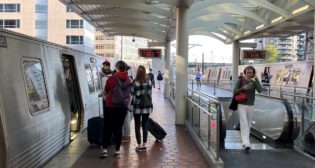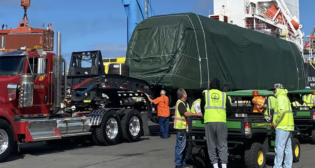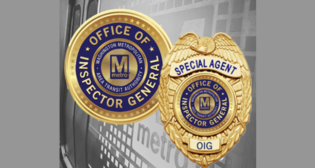
‘Skyline’ Opens in Honolulu
Written by William C. Vantuono, Editor-in-Chief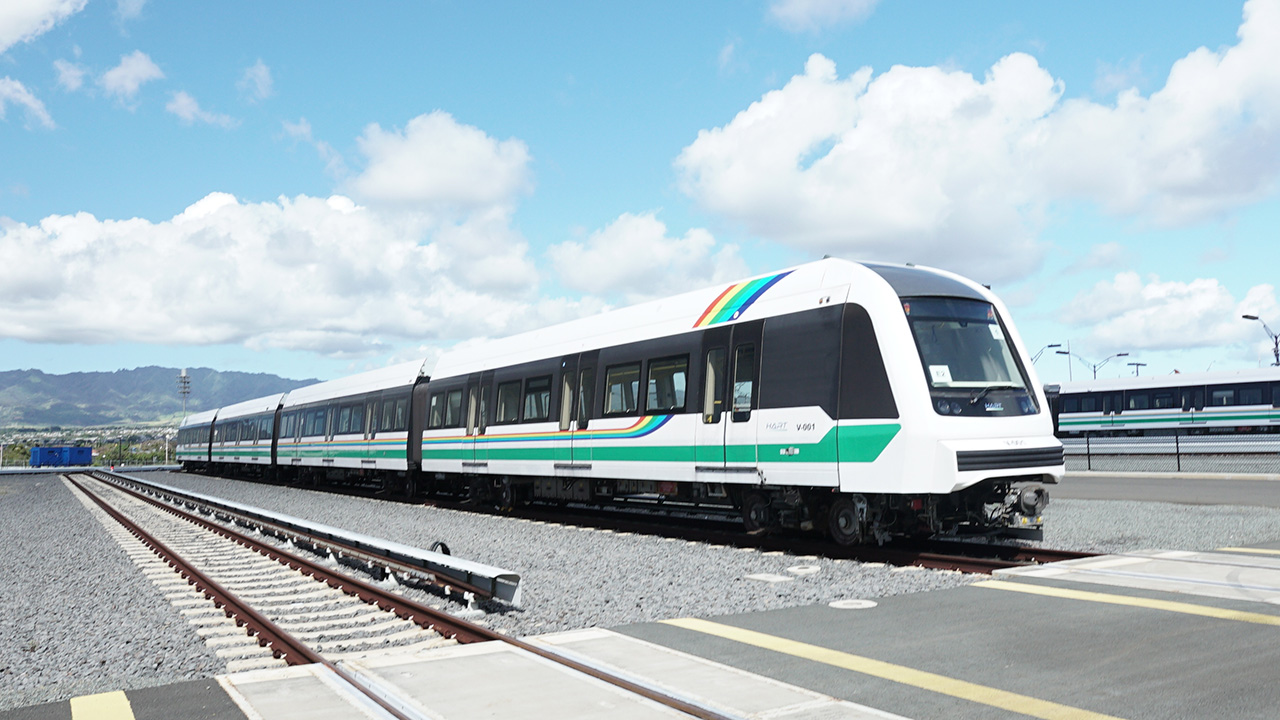
All photos courtesy Hitachi Rail
The initial operating segment of Honolulu’s 20-mile, 21-station autonomous (driverless) Skyline, the first urban rail transit GoA4 (Grade of Automation) system in operation in the United States, opened for revenue service on June 30.
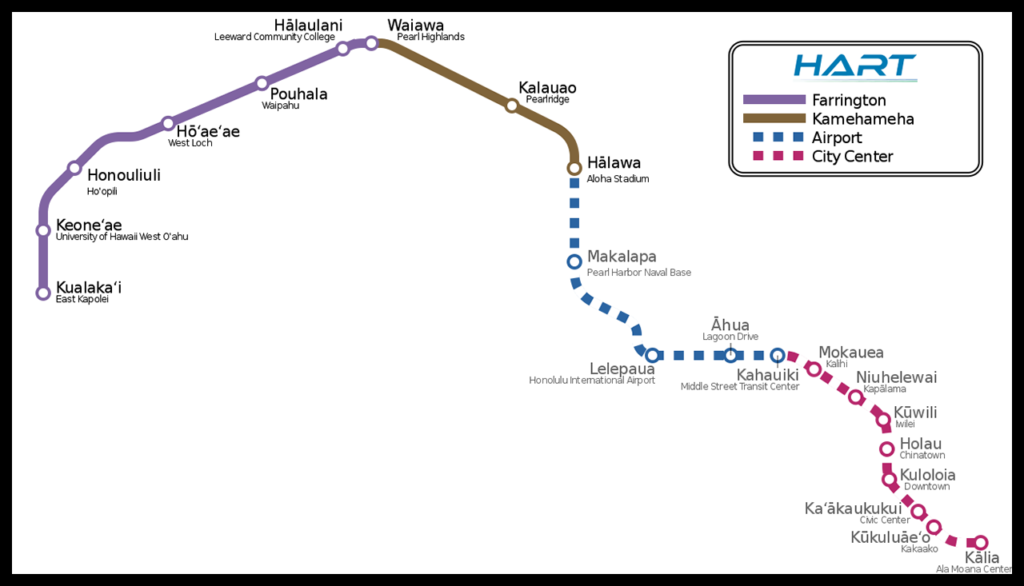
Hitachi Rail delivered the elevated-guideway “light metro” Skyline—described as “the first new major metro system to launch in the U.S. since 1993”—to the Honolulu Authority for Rapid Transportation (HART) and the City’s Department of Transportation Services (DTS) under a 12-year DBOM (design-build-operate-maintain) contract. (HART and DTS will maintain the civil works portion.)
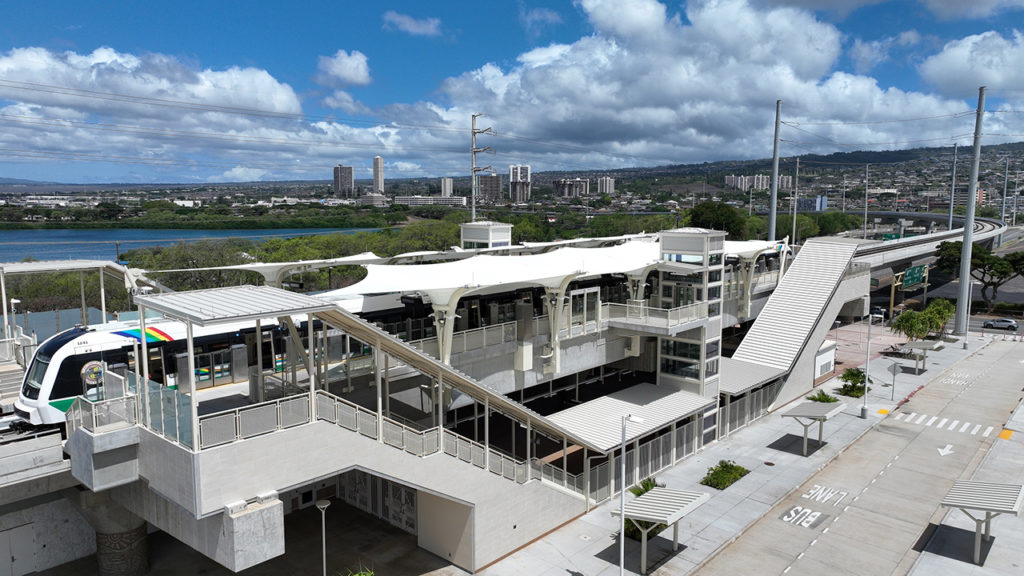
The IOS (initial operating segment) is 11 miles long, with nine stations from East Kapolei to Aloha Stadium. The second phase, which is expected to be operational in 2025, adds 5.2 miles and four stations from Aloha Stadium to Middle Street-Kalihi Transit Center, incorporating Daniel K. Inouye International Airport. A third phase will add three miles and six stations to a temporary terminus at the Civic Center Station in Kakaako. An additional one mile and two stations terminating at Ala Moana Transit Center will be completed in a later phase.
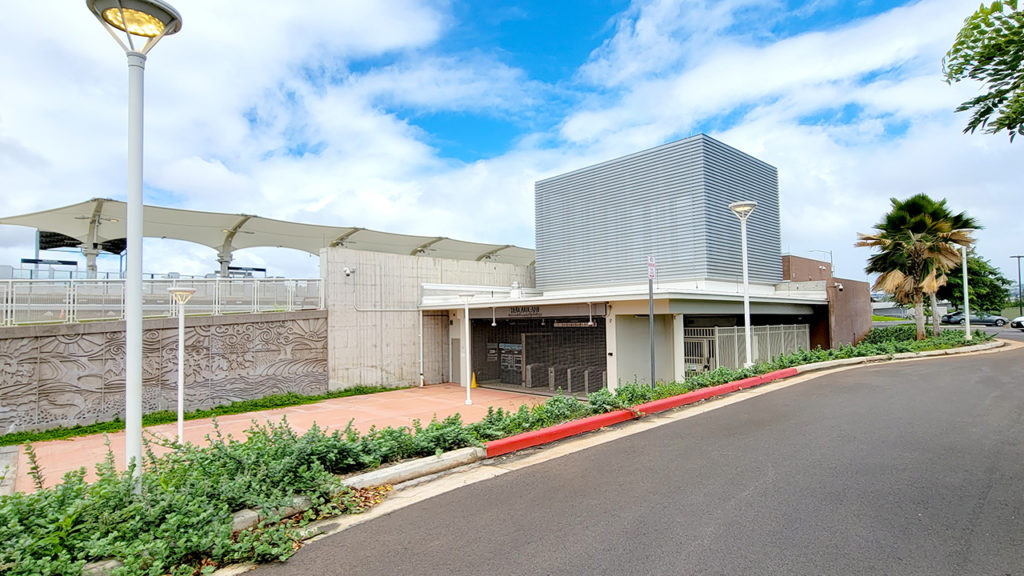
When complete, Skyline, which runs along Oahu’s south shore—a densely packed east-west transportation corridor with severe road traffic congestion—is estimated to eliminate 40,000 motor vehicle trips per day, equivalent to eight highway lanes.
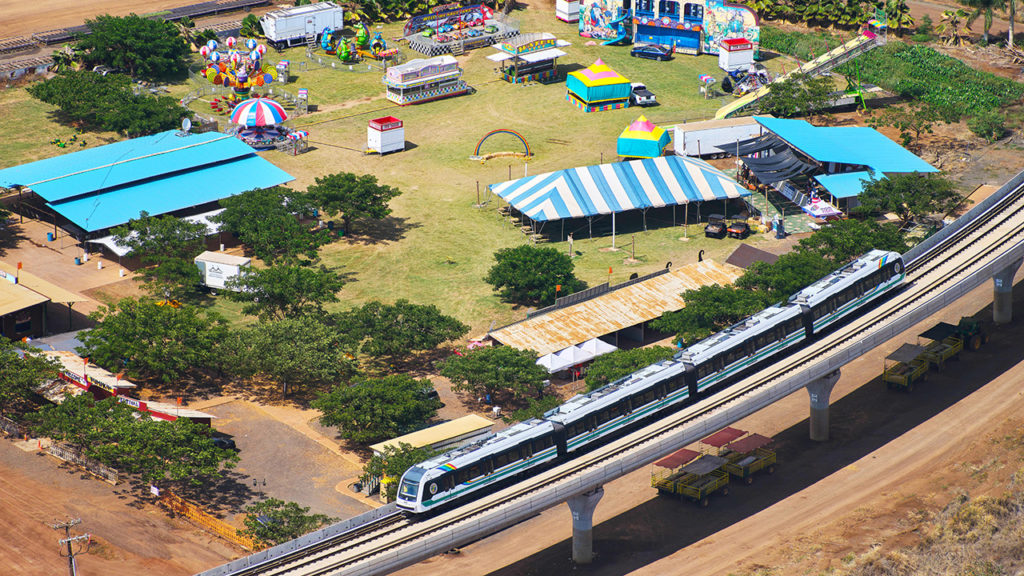
Hitachi Rail’s role in the joint venture includes:
- Rolling stock consisting of 20 four-car Aluminum-bodied EMU (electric multiple-unit) trainsets operating off 750 VDC third rail on standard-gauge (4 feet, 8.5 inches or 1,435 mm) rails, with a total length of 260 feet and 800-passenger capacity. The trainsets have 12 doors per side (three per car), and are 10 feet wide, with open gangways between cars to allow passengers to move freely using all available space. Maximum operating speed is 65 mph (105 kph). The trainsets are air conditioned, and have Wi-Fi as well as ample space for bicycles, surfboards, baby strollers, luggage, etc. They are also fully compliant with the Americans with Disabilities Act (ADA), with dedicated spaces for wheelchairs, allowing free movement for disabled passengers boarding and deboarding.
- A DTG (distance to go) ATC (automatic train control) system. The DTG is track circuit-based, with radio communication for transferring diagnostic info, CCTV streaming and some special radio commands.
- Subsystems design and construction, including fire detection, alarm systems, passenger screen gate system, etc.
- Testing, commissioning and safety certification of the entire system for passenger service.
- Operations and maintenance (except for civil works) during passenger revenue service.
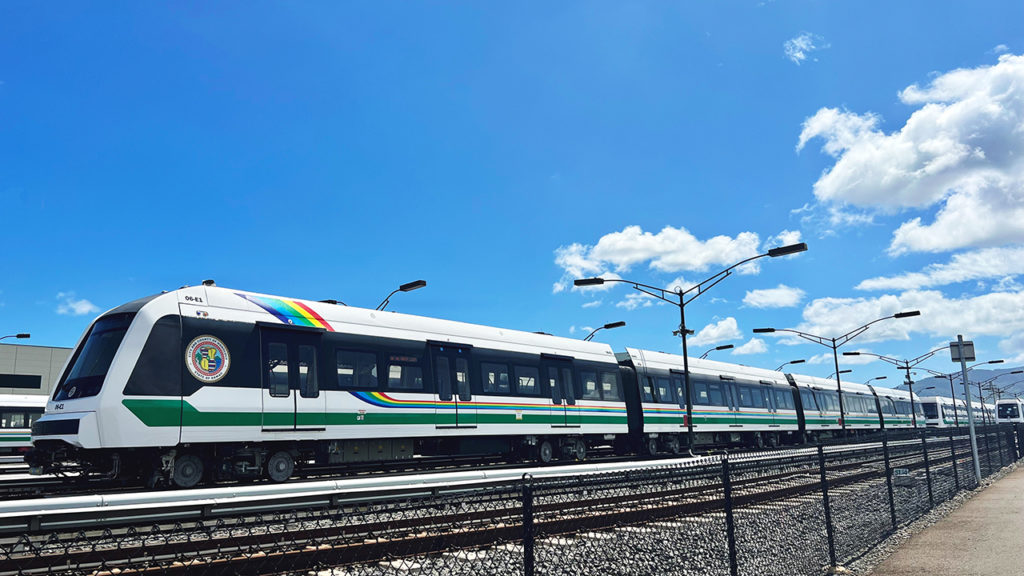
Hitachi Rail described the system to Railway Age as “fully redundant. System performance is automatically calculated based on adherence to the time schedule and availability of all functionalities. This allows us to quantify and continuously ensure the best performance for passengers. Our punctuality target is 99.5%, with 10-minute headways.”
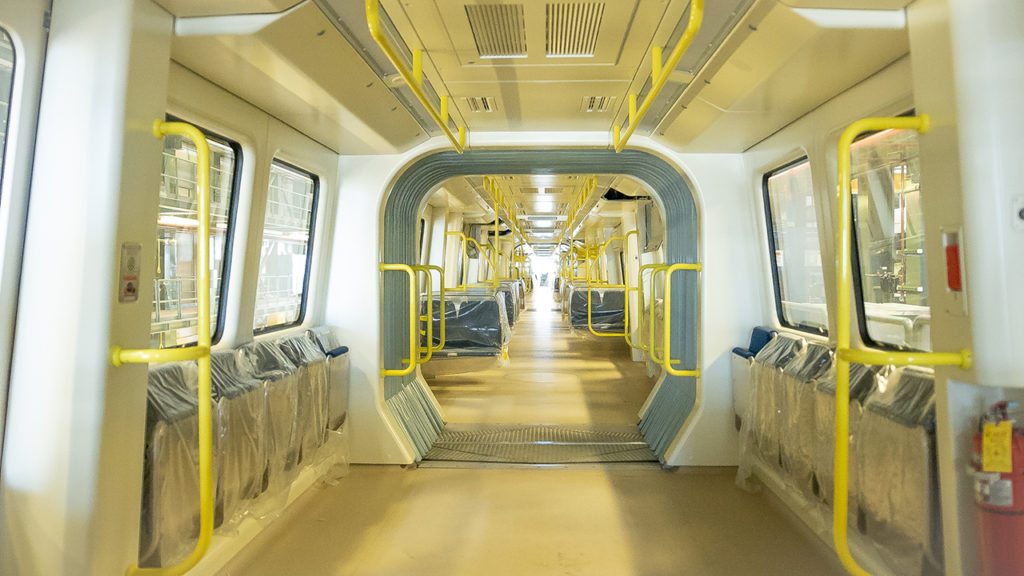
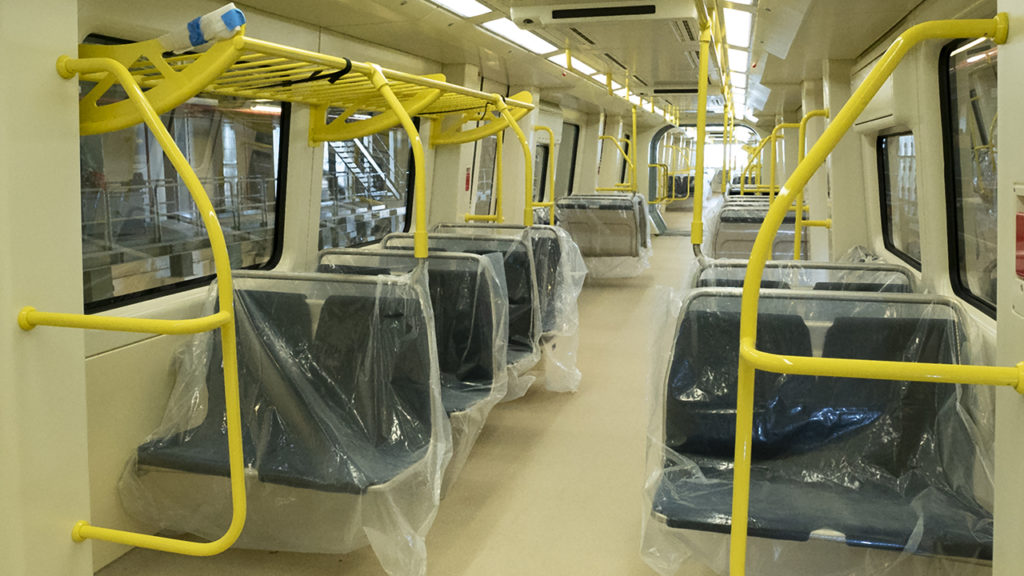
A grand opening ceremony was held at Aloha Stadium station, with 250 in attendance, with speeches from U.S. Senator Brian Schatz, Hawaii Governor Josh Green, Honolulu Mayor Rick Blangiardi, DTS Director Roger Morton, and Hitachi Ltd. Executive Vice President Energy and Mobility Alistair Dormer.
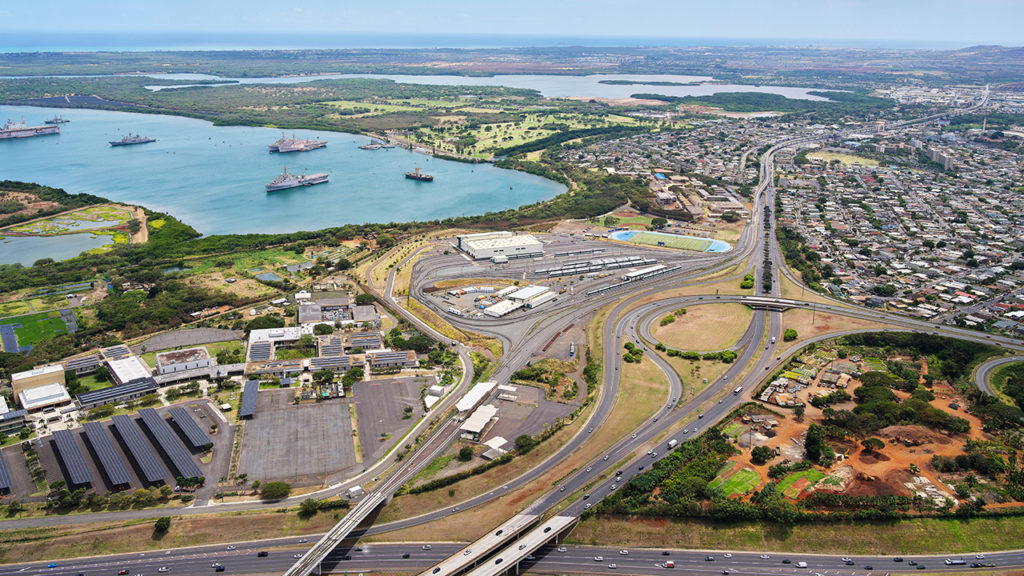
“We’re delighted to have delivered Honolulu’s largest ever infrastructure project, which will have a major impact reducing congestion and emissions on the island,” said Dormer. “Reducing car journeys by up to 40,000 a day, once the full system is complete, will make a huge difference to travel in Hawaii.”
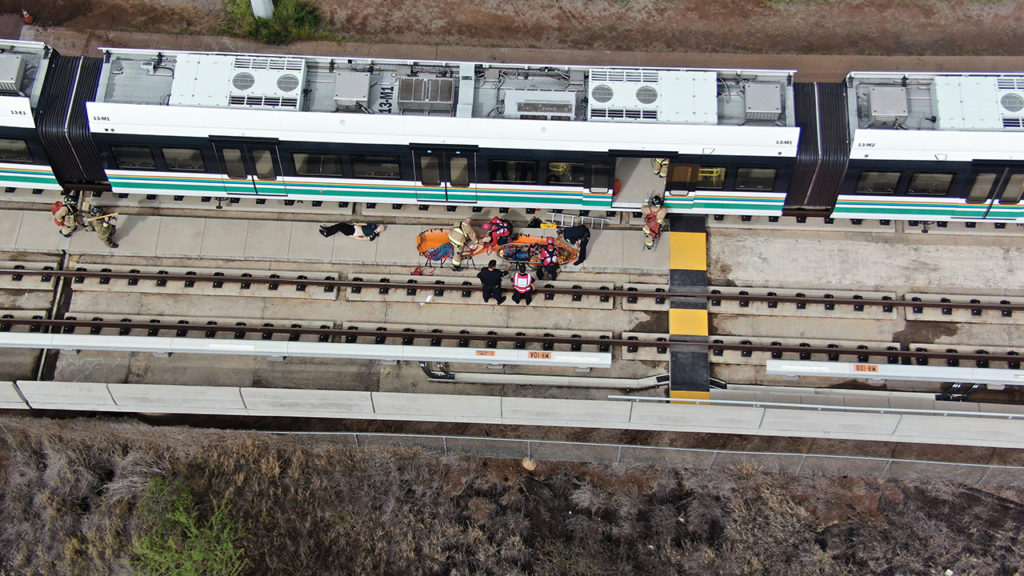
“Delivering the first-ever fully autonomous rail system in the U.S. is an extremely proud moment for Hitachi Rail, said Group CEO Giuseppe Marino. “It cements our position as an international leader in autonomous metros, which have such an important place in offering reliable, high capacity, sustainable transportation for cities around the world.”
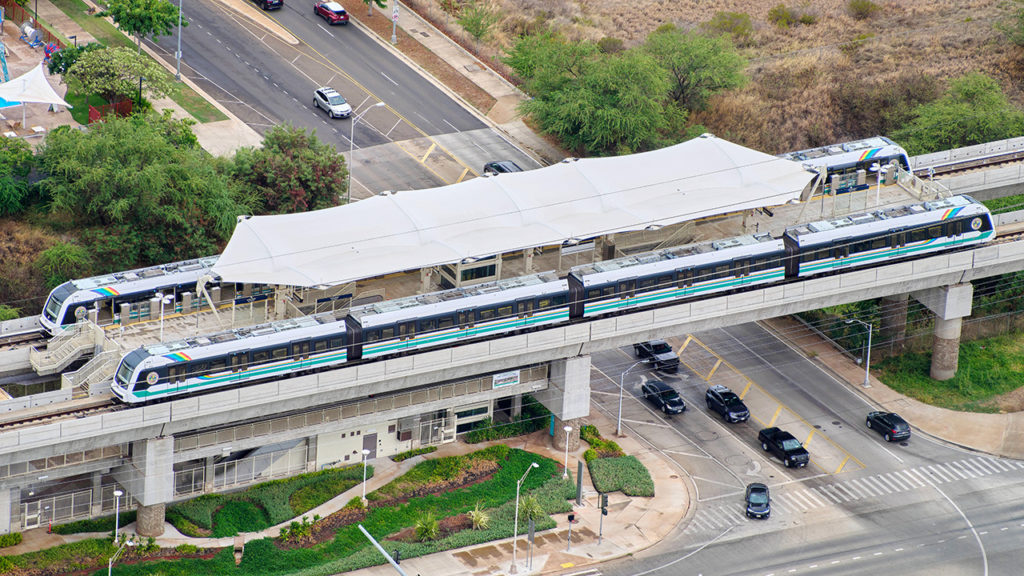
“This system represents a long-overdue opportunity, and I cannot thank enough the hands that went into completing this first phase of the project,” said Blangiardi. “Because of each and every one of you, our future generations of residents and visitors alike will be able to experience a modernized transit network on Oahu. Skyline presents an unprecedented opportunity to connect passengers to our central and leeward cities and the distinct beauty and character they each possess. My warmest Mahalo to the hundreds of hard-working professionals at Hitachi Rail who have served as valuable partners in this project thus far.”
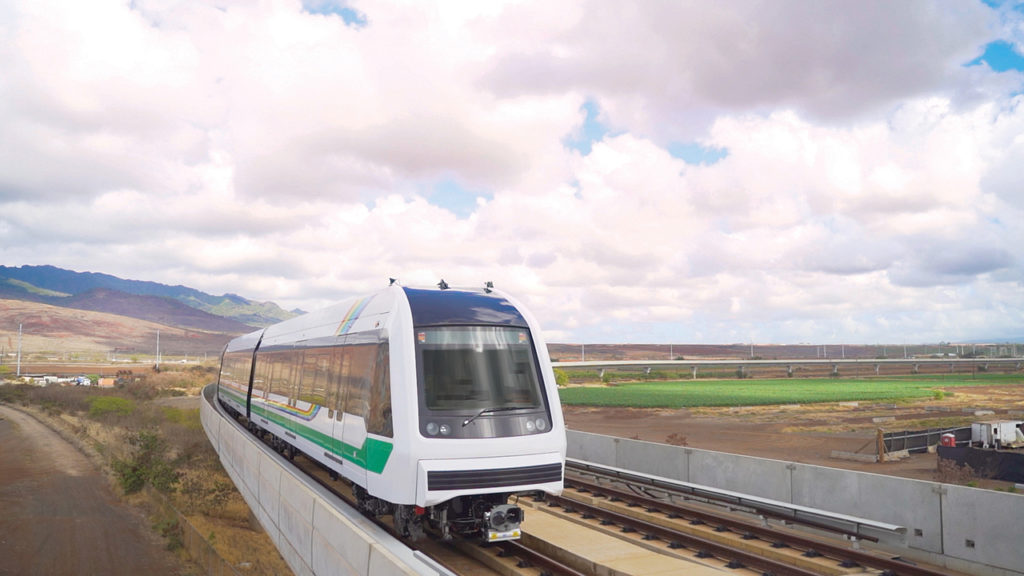
“The initial opening of Skyline is a momentous achievement, and Hitachi Rail has been an instrumental partner in reaching this goal of delivering the first fully automated driverless commuter rail system in the country to the community, said HART CEO Lori Kahikina. “The HART Team is extremely grateful to have earned the trust and support from our stakeholders to work collaboratively in the interest of the tax payer to deliver the first installment of the State’s largest capital improvement project and infrastructure investment in its history.”
SEE: HART IOS Drone Flyover
Editor’s Note: As a Big Band Jazz fan, I’d like to suggest the Charlie Barnet Orchestra’s hit number “Skyliner” as the transit system’s theme. Here are two mid-1940s films, on YouTube. Interestingly, Barnet’s grandfather Charles Frederick Daly was a New York Central Railroad vice president. The guitarist on the first clip is none other than Barney Kessel. Neal Hefti wrote the arrangement. – William C. Vantuono
